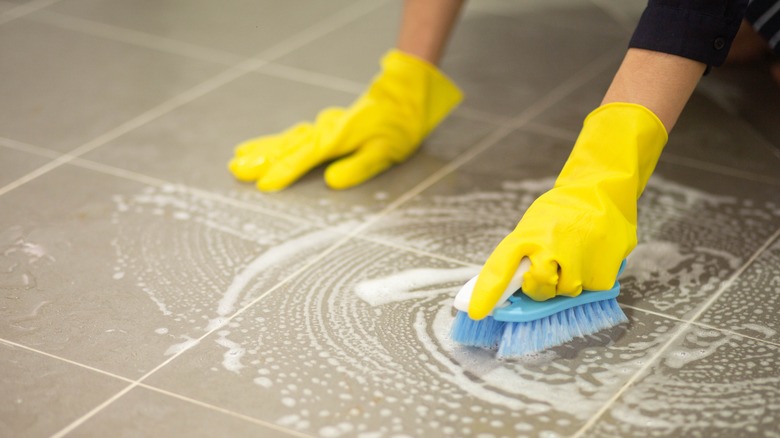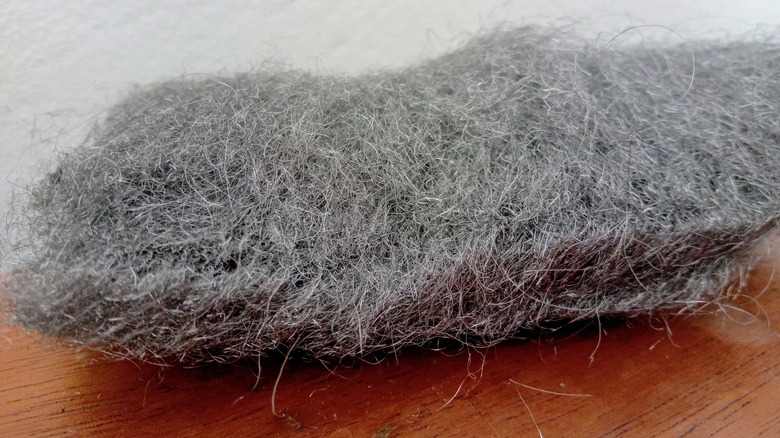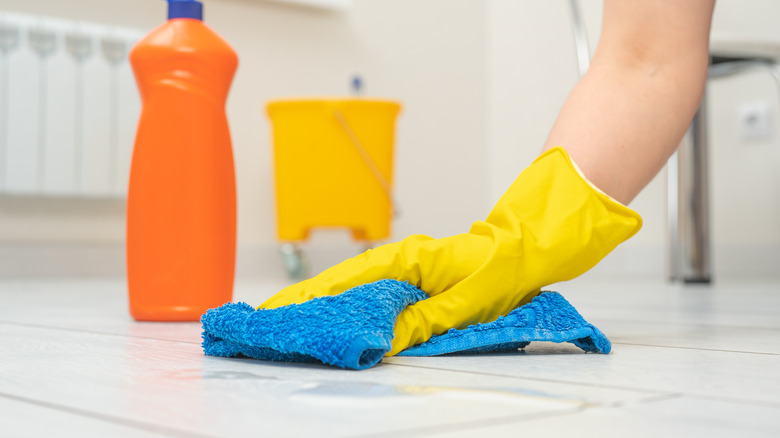The Popular Cleaning Item That Will Damage Your Ceramic Tile Floors
Ceramic tile floors work well in nearly any room in the home. They are most commonly used in bathrooms and kitchens, but ceramic tiles can also add character to bedrooms and living rooms when used correctly. In fact, ceramic tile is even a choice for basement flooring sometimes. This material works especially well in bathrooms and kitchens when it's glazed because the tile is then water resistant since typically these spaces tend to collect more dirt, grime, and spills than other rooms. Regardless, ceramic flooring must be cleaned pretty frequently.
During these routine sessions, avoid using steel wool or scouring pads on ceramic tile floors. These cleaning tools are far too abrasive and can leave scratches. Ceramic tile scratches easily because it is typically both made of and coated with clay, which cannot withstand this kind of damage. When ceramic tile does become scratched, you will need to either replace the damaged sections completely or attempt to make the scratches less noticeable. There is no easy fix, so avoid scratching your ceramic tile flooring with steel wool or scouring pads.
Steel wool and scouring pads are far too abrasive
Experts advise against using steel wool or harsh scouring pads on ceramic tile for several reasons. However, you might be tempted by these cleaning tools when you have a particularly stubborn stain. After all, steel wool and scouring pads are known to be amazing at breaking down and loosening stuck-on grime. Unfortunately, this impressive scrubbing power is also what leads to scratches on ceramic tile. Steel cleaning tools might even lead to rusty tile too.
This is because tiny pieces of steel can easily break off and get stuck in the grout between your tiles, gradually rusting over time. Fine steel debris can be difficult to see with the naked eye, so simply sweeping the bits away might not be practical. It is best to avoid using steel wool and any similar cleaning tool on ceramic tile altogether. There are tons of other cleaning methods and tools you can use to remove stubborn stains and grime from tile without these risks.
How to safely clean ceramic tiles and what to use
To safely clean ceramic tiles, start by sweeping to remove any food, dust, or other debris that may be on the floor. Next, use a plastic putty knife to remove any stuck-on residue that wouldn't otherwise be washed away with a mop, such as gum or glue. Now, you should be ready to begin mopping. You can use a solution comprised of hot water, ½ cup of vinegar, and ½ tablespoon of dish soap to mop your floors thoroughly. Go over the tile with a mop dipped in clean water to remove any residue that may have been left behind by the cleaning solution.
For stains and grime trapped in your grout, simply create a separate cleaning solution using ½ cup baking soda, ¼ cup hydrogen peroxide, and 1 teaspoon dish soap. Mix the ingredients to form a paste, and apply it to the stains on your grout. Allow it to sit for five to 10 minutes. After you have given it some time to cut through the stains, use a toothbrush or another small plastic cleaning brush to scrub the necessary spots. Finally, wipe the solution away with a damp cloth. This is one of the easiest ways to clean your grout without damaging the ceramic tile.


